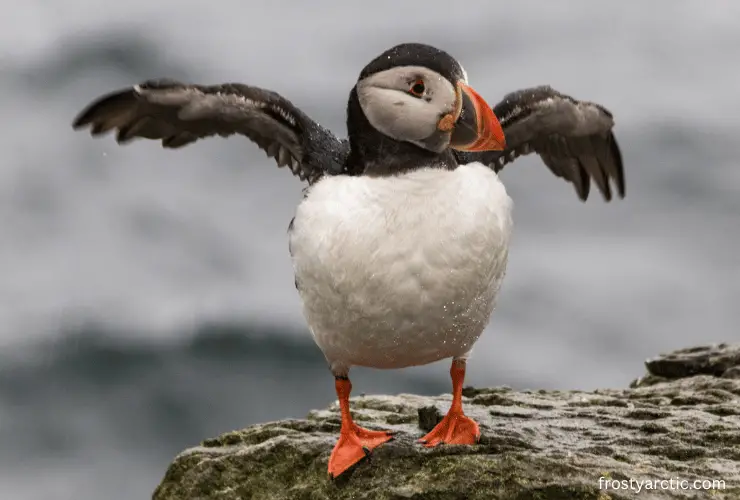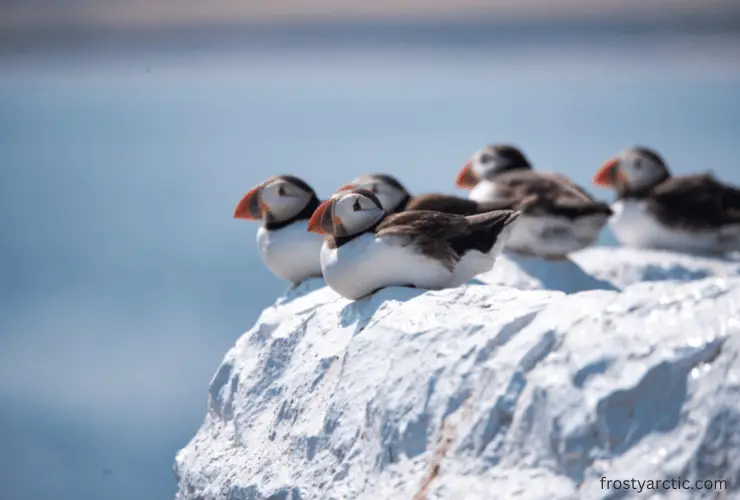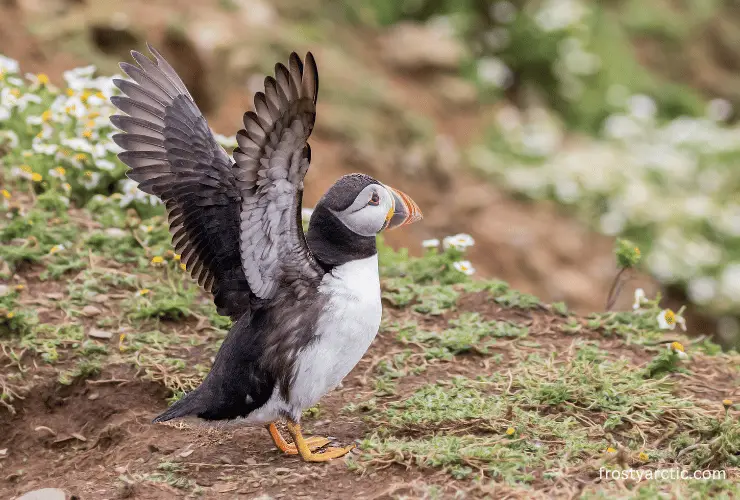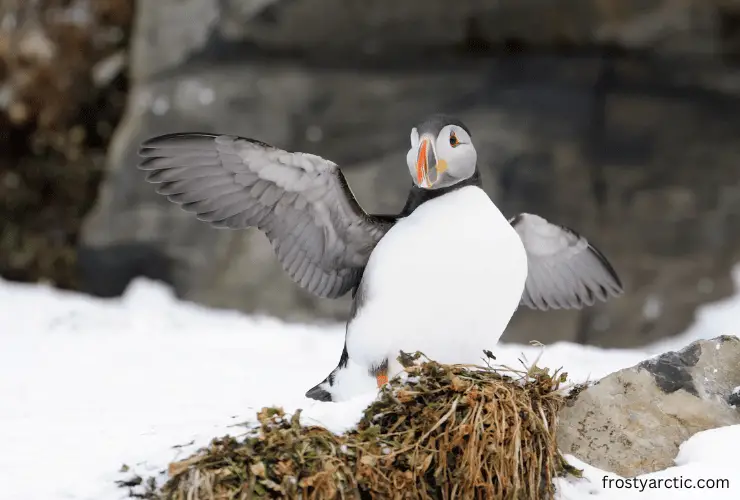Puffins can survive in the arctic due to some of the features that they have. These birds have waterproof feathers that allow them to stay warm and afloat in the water. Moreover, adult puffins spend almost 8 months sleeping and resting on the waves, making survival easier.
Besides having natural features that allow them to survive in winter and even swim, there are more interesting facts about these cute-looking birds! Let’s learn more about what Puffins can do to adapt to the environment they are currently in.
Do Puffins Live in Cold Regions?
Just like snowy owls, puffins also live in cold regions, which mainly include the Arctic. Puffins live in the Arctic and are found on sea cliffs and tundra-carpeted coastlines of many European countries such as Iceland, Norway, Russia, Greenland, and Alaska.

However, puffins don’t only live in the arctic; they are also found on the coasts of Scotland, Norway, the British Isles, and Maine in the United States. Even though these birds mostly live in the Arctic (breed and nest there), they migrate to the southern waters.
How Do Puffins Survive Winter? How Do They Survive in The Arctic?
Every animal has features that help it survive in places where they live. They usually migrate to different regions too. It’s a natural thing. Just like that, puffins have certain features that help them adapt to their environment and survive in winter and the Arctic.
In winter, some puffins stay in the North sea while others migrate to the south bay. Since most of the puffins spend their lives out at sea in winter, they have their survival skills. Adult puffins sleep and rest on the sea waves for about eight months. In winter, these birds are very silent because they spend the winter at sea.
In the arctic, puffins can survive the cold due to the way their feathers are. They have waterproof feathers that help them stay in the water for prolonged periods of time and help them stay warm. They also have an insulating layer of fur, oily skin, and layers of fat around them.
Where Do Puffins Go During the Winter?
During winter, some puffins move to different regions too. These birds start swimming north in the waters of St. Lawrence then they stay in Canada for about a month. After that, they move further to the coast of cape cod.
How Do Puffins Protect Themselves from The Arctic Environment?
To answer the above-given question, there must be a mindset. One, think about the feather type of puffins. Second, remember the migration element of puffins in winter.

Puffins have a waxy feather coat over their body. This waxy coat helps them in staying warm and get less wet as the water flows away due to the oily surface. They stay in the water longer and their feathers aren’t stopping them from flying when needed.
When we say flying, let me tell you about the time when they fly to the far north in winter for nearly 6-8 months. The winter harshness is stabilized by staying away.
The research says that they stay on waves resting on water, like sleeping and eating from beneath the ocean.
How Does a Puffin Adapt to Its Environment?
A puffin is an amazing bird with special features. Some of them are mentioned here:
- Waterproof feathers
- Extremely fast flying (400 flaps in a minute)
- Holding 10 or more fish in the beak at a time
- Diving and adept at swimming in the water
- Ability to drink salt water and release excessive salt through supraorbital glands
All these features help puffins survive the harsh weather, tough land conditions and open sea. The waterproof feathers help in staying on the water during winter.
The feathers help them in fast swimming and grabbing prey underwater. They also stay in the water for a long period of time with the help of supraorbital glands. The glands help them drink salt water and stay hydrated.
The colorful bill is not alone a romantic attraction but also helps them in multiple ways. The strong bill and sharp claws help them in digging burrows and attacking the predators. The fast flying takes them to far-off areas as they are born migrants.
Do Puffins Migrate During Winter?
Yes, they do. They migrate to the open sea and stay there for 6-8 months. The time they spend on land is for mating and breeding. There are various reasons for puffins to migrate. Insufficient food due to larger puffin colonies and the shift of food sources farther north are some of the reasons for them to migrate.
Tracking through the geolocators, it is found that in August, they migrate north, some to Greenland and some southwards towards France and Biscay. In autumn, they move to the North Atlantic. Before returning to the land, their last stay is in the Mediterranean.
Where Do Puffins Live?
Puffins live in the Arctic. From Iceland to Greenland, Russia, Norway, Alaska and the remote Aleutian Islands, they are found on sea cliffs and tundra-carpeted coastlines.

Along with the high Arctic, puffins are also staying on the coasts of Norway, Scotland, Brittany coast in France and Maine in the United States. Here what is to consider is that they mate and nest in the Arctic, but they migrate to the North Atlantic. The areas where they move to have already been discussed above.
FAQ:
Do puffins live at the North Pole?
Yes, Puffins live in the arctic, which is technically the north pole. They are also found on the coasts of Iceland, Norway, Russia, Greenland, and the Aleutian Islands.
Where do Puffins go in Winter from Iceland?
In winter, puffins spend their time in the open seas at the north Atlantic and then move to shallower waters during spring.
How Long do Puffins Live?
Puffins live quite a very long life. They live about 20 years and even more sometimes.
Conclusion
Puffins’ bodies have been designed by nature to let them survive in the Arctic environment where only specific animals can live. It is due to their adaptations to the environment that they stay alive and proceed with their life activities. They are excellent swimmers, fast fliers, born migrants and smart hunters. The arctic environment is tough enough to enable the survival of the fittest alone.



3 thoughts on “How Do Puffins Survive in the Arctic?”